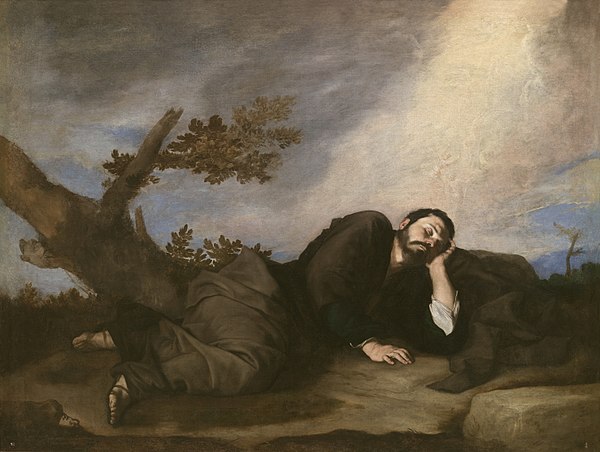And he arrived upon the place and lodged there all night, because the sun was set; and he took from the stones of the place, and put them under his head, and lay down in that place to sleep. (Genesis 28:11)
And Jacob rose up early in the morning, and took the stone that he had put under his head, and set it up for a pillar, and poured oil upon the top of it. (Genesis 28:18)
Rashi notes that, before Jacob lies down to sleep, the verse speaks of the plurality of stones: “he took from the stones of that place, and put them under his head.” When Jacob wakes up, the verse suddenly switches from plural to singular, mentioning only one stone: “and took the stone that he had put under his head.” Rashi, Maharsha,[1] and other Biblical commentators state that the plurality of stones that Jacob took miraculously fused into a single stone. The Rashi’s explanation, based on the Talmud (Chullin 91b), is well known.
Let us explore here another possible homiletic explanation of this seeming contradiction in the biblical verses.
Stones are the coarsest form of matter. In this sense, they are emblematic of the physical matter and nature in general, as opposed to spiritual. The “many stones” at the beginning of the narrative may be viewed as a metaphor for the multiplicity found in the material world.
How manifold are Thy works, O Lord! (Psalms 104:24)
The head of Jacob, which rested on these stones, represents a metaphor for our understanding of nature. At first, nature appears fragmented, full of diverse and disjointed phenomena.
During Jacob’s sleep, G‑d appears to Jacob:
I am the Eternal, the G‑d of Abraham thy father, and the G‑d of Isaac. The land whereon thou liest, to thee will I give it, and to thy seed. And thy seed shall be as the dust of the earth, and thou shalt spread abroad to the west, and to the east, and to the north, and to the south. (Genesis 28:13-14)
G‑d promises Jacob that he will sire many descendants who will be “as the dust of the earth.” Jacob siring many descendants is a manifestation of the one-to-many dynamic, emblematic of the creation of the world—the primordial manifestation of the One-to-many paradigm.
After this theophany, Jacob finds only a single stone under his head. The fusion of the stones represents the opposite dynamics of the many-to-one paradigm. It symbolizes the unification of the seemingly fragmented physical phenomena into a single reality, transforming our fractured understanding of reality into a coherent vision of unity.
Many authors have pointed out that it is not coincidental that modern physics and its quest for unification originated in the West with its predominantly monotheistic religions stemming from the original monotheism of the Torah. Thus, the British physicist John Barrow writes:
The current breed of candidates for the title of a “Theory of Everything” hope to provide an encapsulation of all the laws of nature into a simple and single representation. The fact that such a unification is even sought tells us something important about our expectations regarding the Universe… Our monotheistic traditions reinforce the assumption that the Universe is at root a unity.[2]
A single stone under Jacob’s head symbolizes our quest for the Theory of Everything—a unification of reality. This is just one example of a more general notion. G‑d’s creation of the world is the realization of the One-to-many paradigm. It is the Divine service of man to do the opposite—to sublimate the physicality in return from many-to-One. This ultimate paradigm shift is one of the key aspects of the Messianic redemption.
————————
Endnotes:
[1] Rabbi Shmuel Eidels (1555 – 1631) who flourished in the seventeenth century in Poland and Ukraine. He authored a commentary on Talmud, Chiddushei Halachot, now printed in almost all editions of the Talmud. He also authored Chiddushei Aggadot, a commentary on Talmudic Aggad’ta.
[2] John Barrow, “Theories of Everything: The Quest for Ultimate Explanation” (Oxford University Press, 1991), p. 15.

nice.
the same insight could apply about 280 years later by the ‘Frog’/frogs of Macah plague two by Exodus year 2448 AM
thank you very very much for your wonderful insights.
they present and uncover part of the 70 panim laTorah.
hayim
Excellent view of this story, much appreciated.